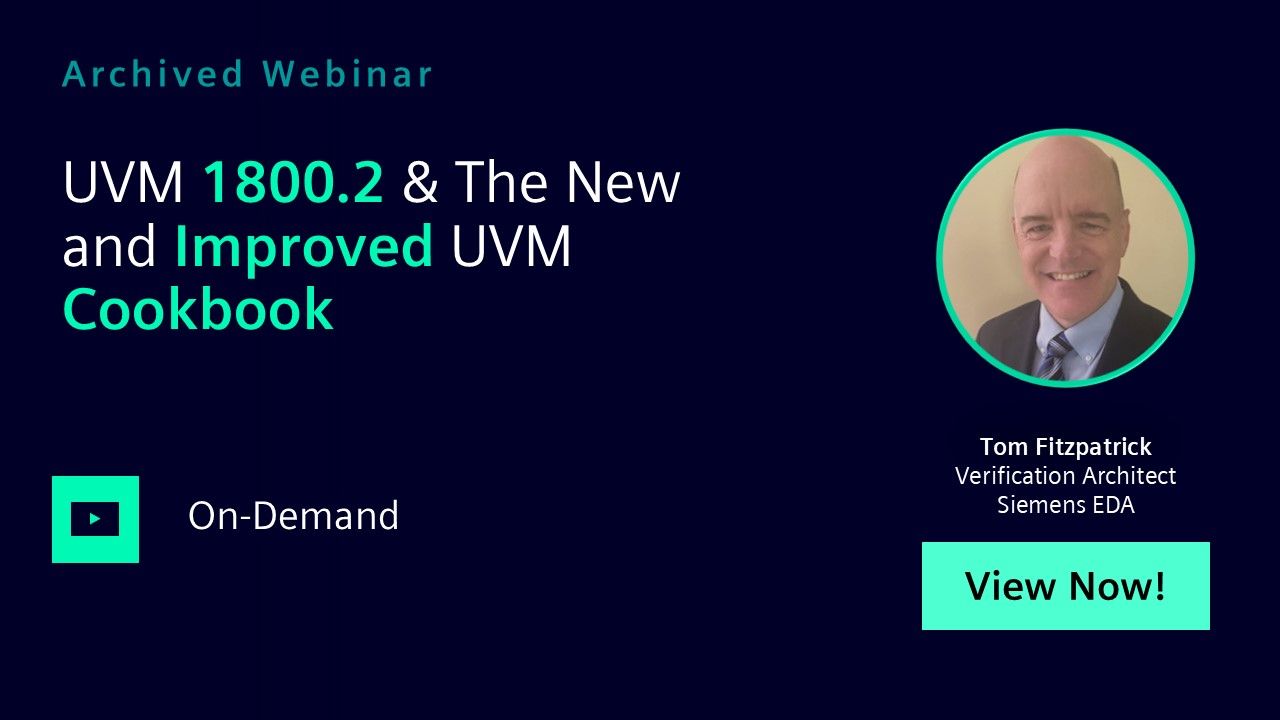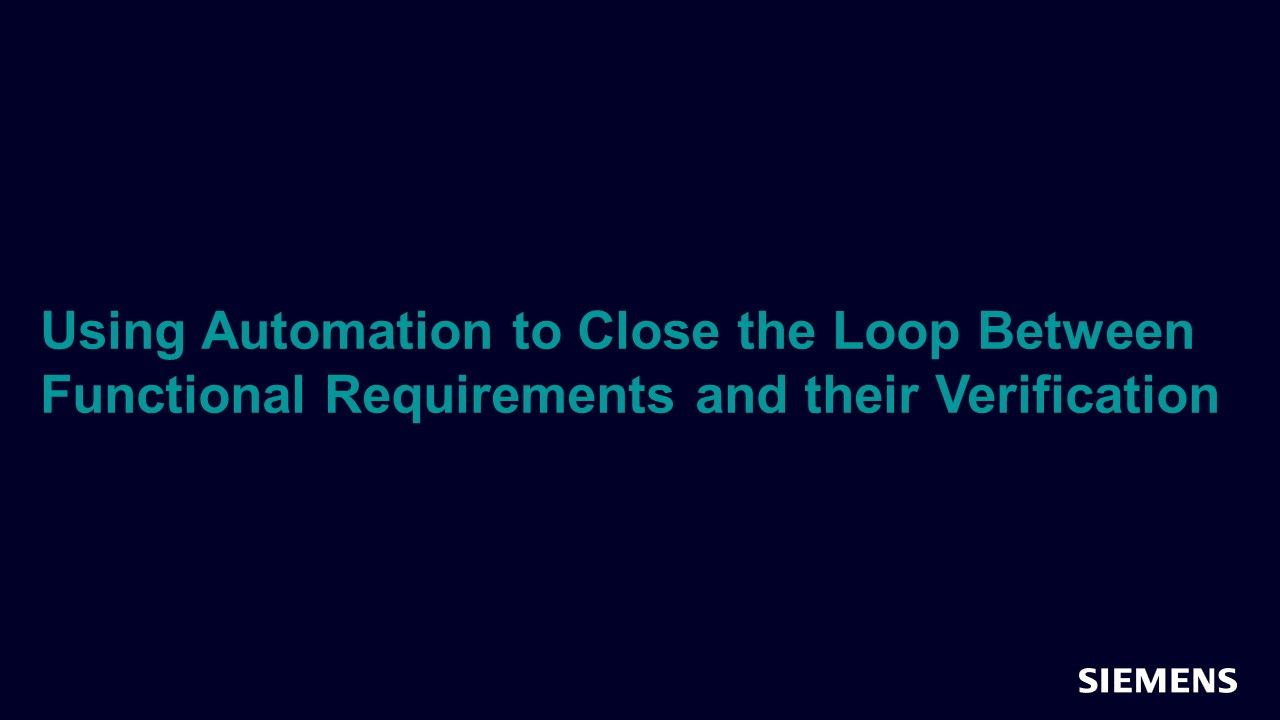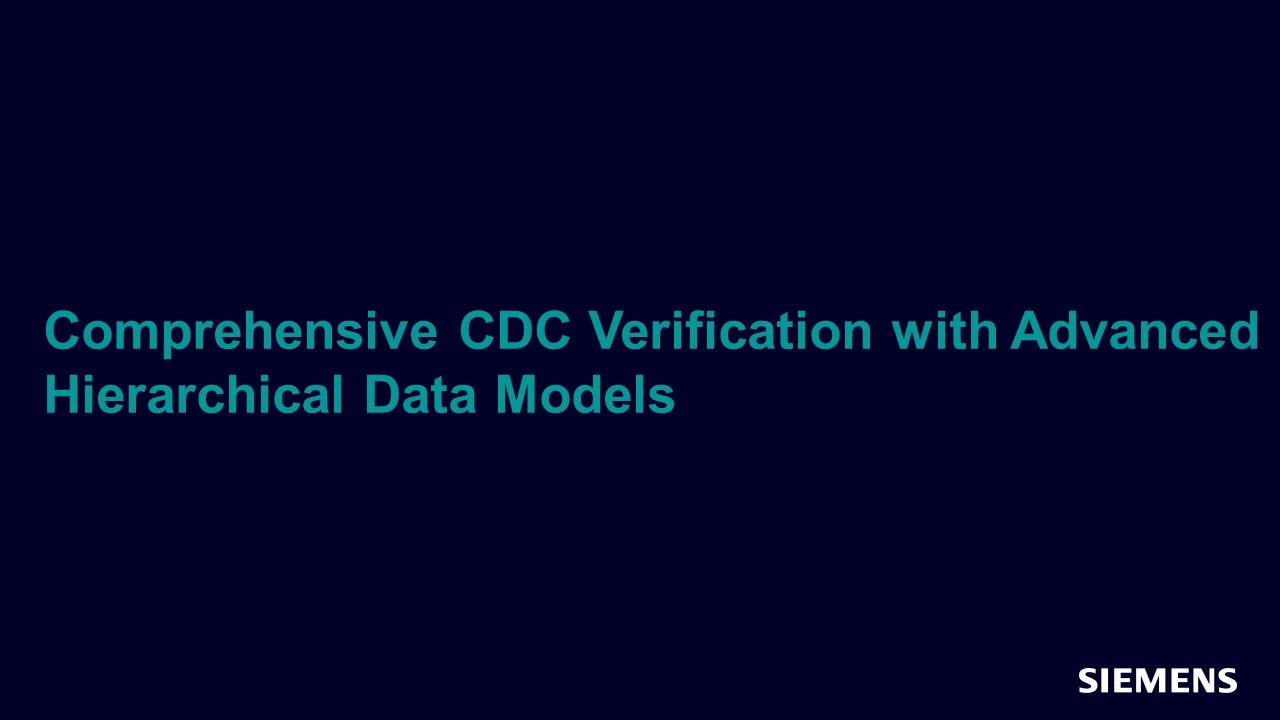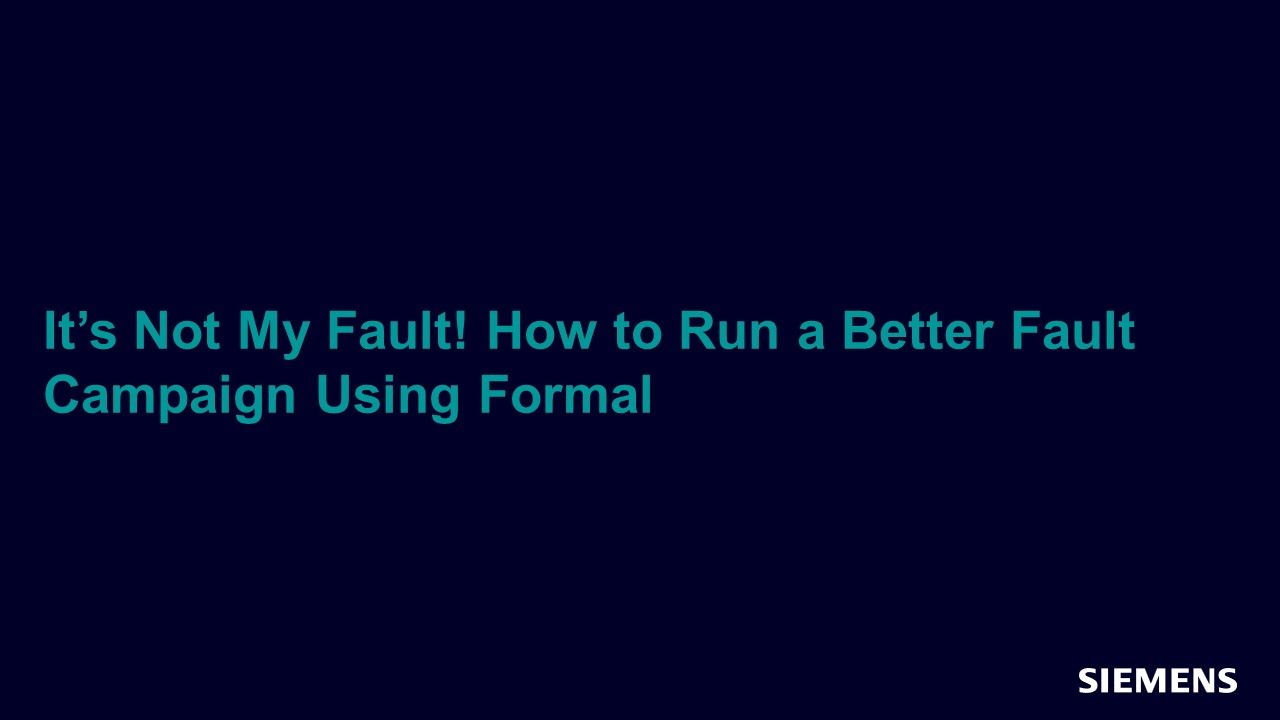Search Results
Filters
Advanced Search
2173 Results
-
Visualizer Debug Introduction
Resource (Slides (.PDF)) - Sep 27, 2018 by
-
UVM 1800.2 & The New and Improved UVM Cookbook
Resource (Slides (.PDF)) - Sep 11, 2018 by Tom Fitzpatrick
-

UVM 1800.2 & The New and Improved UVM Cookbook
Webinar - Sep 11, 2018 by Tom Fitzpatrick
This session will start with an overview of the changes in UVM 1800.2 from UVM 1.2 and 1.1d so you can be prepared to embrace the new Standard.
-

UVM
Cookbook - Sep 05, 2018 by Verification Methodology Team
The (2018) version conforms to the IEEE 1800.2 UVM Standard and promotes an emulation-friendly UVM testbench architecture that promotes reuse of your UVM environment as your project moves from simulation to emulation and beyond. Find all the UVM methodology advice you need in this comprehensive and vast collection.
-
UVM-2017 v0.9 Library Code for IEEE 1800.2
Resource (Tarball) - Aug 29, 2018 by
-
UVM 2017-1.0 Reference Implementation
Resource (Tarball) - Aug 29, 2018 by
-

UPF Information Model: The Future of Low-Power Verification Today
Paper - Aug 28, 2018 by Progyna Khondkar
The IEEE 1801-2015 or UPF 3.0 language reference manual (LRM) introduces a new conceptual low power verification methodology, known as ‘UPF information model’. The model captures power management information from UPF commands and their semantics applied on designs (generally specified in different HDL e.g. Verilog, SystemVerilog, VHDL etc.). The UPF commands are power intents applied on a design, intended to leverage low power.
-
UPF Information Model: The Future of Low-Power Verification Today
Resource (Paper (.PDF)) - Aug 28, 2018 by Progyna Khondkar
The IEEE 1801-2015 or UPF 3.0 language reference manual (LRM) introduces a new conceptual low power verification methodology, known as ‘UPF information model’. The model captures power management information from UPF commands and their semantics applied on designs (generally specified in different HDL e.g. Verilog, SystemVerilog, VHDL etc.). The UPF commands are power intents applied on a design, intended to leverage low power.
-

Using Automation to Close the Loop Between Functional Requirements and their Verification
Webinar - Aug 10, 2018 by Brian Craw
This session will define a “Verified by” relationship between the Verification Requirement and the Coverage Intent work item and the Verification Requirement and Test work item. The final pieces needed to close the loop is the proof that the coverage item was met in a passing simulation.
-
Using Automation to Close the Loop Between Functional Requirements and their Verification
Resource (Slides (.PDF)) - Aug 10, 2018 by Brian Craw
This session will define a “Verified by” relationship between the Verification Requirement and the Coverage Intent work item and the Verification Requirement and Test work item.
-
Power Aware Simplifies Parametric PA-SIM Regression
Resource (Slides (.PDF)) - Aug 02, 2018 by
-
Portable Stimulus versus UVM: What's the Difference?
Resource (Slides (.PDF)) - Jul 30, 2018 by John Aynsley
We compare the Accellera Portable Test and Stimulus Standard (PSS) with the Universal Verification Methodology (UVM), and ask exactly what the difference is between the two when it comes to generating stimulus for hardware verification and SoC verification.
-
Data Mining for SoC Level Performance
Resource (Slides (.PDF)) - Jul 26, 2018 by Mark Olen
This session describes how to use data mining techniques to analysis SoC level performance metrics to find problems that escape even the best simulation and emulation processes - including SoC level bandwidth, latency, cache coherency, opcode execution performance, and more.
-
Validating Your SoC is True to Requirements
Resource (Slides (.PDF)) - Jul 26, 2018 by Stephen Bailey
-
Portable Stimulus: A New Hope
Resource (Slides (.PDF)) - Jul 26, 2018 by Tom Fitzpatrick
This session will provide an overview of the new Portable Stimulus Standard, show expected use models and provide some concrete examples of how to apply this exciting technology.
-
Building An Integrated Verification Flow
Resource (Slides (.PDF)) - Jul 26, 2018 by Neil Johnson
While a lot of information is produced to introduce and support individual verification techniques, methods for applying a variety of verification techniques in a complementary way are harder to come by. In this session, we’ll discuss the factors and decisions that go into building an effective verification flow including what techniques to use and how they can be used together.
-
Emulation Platform Brings Unique Solutions to Automotive Market
Resource (Slides (.PDF)) - Jul 26, 2018 by Vijay Chobisa
-
AMS Verification Methodology for GPUs in AI and Deep Learning Applications
Resource (Slides (.PDF)) - Jul 26, 2018 by
-
Portable Stimulus from IP to SoC - Achieve More Verification
Resource (Slides (.PDF)) - Jul 26, 2018 by Matthew Ballance
This session will explain the buzz about the emerging Accellera Portable Stimulus Standard and how users have long been applying Portable Stimulus techniques across block, subsystem, and SoC-level environments to improve their verification productivity.
-
No One Expects Gate Level CDC Verification and Glitch Detection for ASIC Signoff!
Resource (Recording) - Jul 26, 2018 by Kurt Takara
In this session we will share a real world case study of how the customer applied Questa CDC at the RTL level, then Questa Signoff CDC for gate-level CDC and glitch detection to wring out 3 glitches among millions of signals. (One of the glitch sources found was one that they had suspected; but the other two were a complete surprise.)
-

Comprehensive CDC Verification with Advanced Hierarchical Data Models
Article - Jun 29, 2018 by Ping Yeung
The size and complexity of designs, and the way they are assembled, is changing the clock-domain crossing (CDC) verification landscape. It is now common for these complex SoCs to have hundreds of asynchronous clocks.
-

Creating SoC Integration Tests with Portable Stimulus and UVM Register Models
Article - Jun 29, 2018 by Matthew Ballance
Writing and reading registers is the primary way that the behavior of most IPs is controlled and queried. As a consequence of how fundamental registers are to the correct operation of designs, register tests are a seemingly-simple but important aspect of design verification and bring-up. At IP level, the correct implementation of registers must be verified – that they are accessible from the interfaces on the IP block and that they have the correct reset levels.
-

It’s Not My Fault! How to Run a Better Fault Campaign Using Formal
Article - Jun 29, 2018 by Doug Smith
The ISO 26262 automotive safety standard requires evaluation of safety goal violations due to random hardware faults to determine diagnostic coverages (DC) for calculating safety metrics. Injecting faults using simulation may be time-consuming, tedious, and may not activate the design in a way to propagate the faults for testing.
-

Coverage Driven Verification of NVMe Using Questa VIP (QVIP)
Article - Jun 29, 2018 by Anurag Singh - Siemens EDA
Verification planning requires identification of the key features from the design specification along with prioritization and testing of the functionality that leads to the development of a coverage model.
-

Part 2: Power Aware Static Verification – From Power Intent to Microarchitectural Checks of Low-Power Designs
Article - Jun 29, 2018 by Progyna Khondkar
Part I of this article provided a consolidated approach to understand verification tools and methodologies that applies a set of pre-defined power aware (PA) or multi-voltage (MV) rules based on the power requirements, statically on the structures of the design.